#Giza Pyramids Plateau
Explore tagged Tumblr posts
Text

The Giza Plateau - Egypt
9 notes
·
View notes
Text


The Plateau, Giza
8 notes
·
View notes
Text
#antediluvian#antediluvian civilizations#giza plateau#great pyramid of giza#pyramids of giza#giza#polymer clay
4 notes
·
View notes
Text
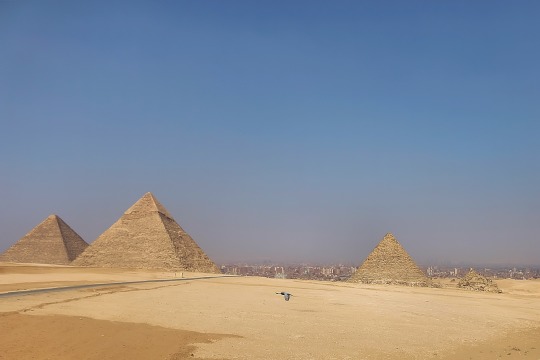

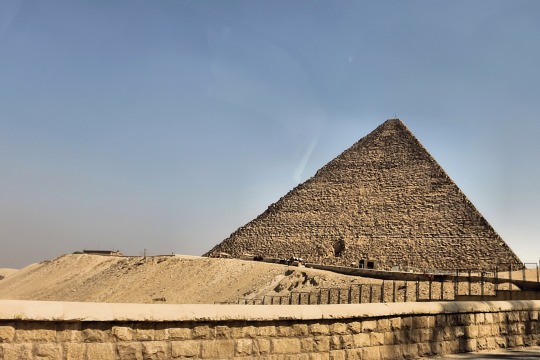
The Golden Sands of Giza Desert
#Ancient Egypt#Pyramids#Limestone#Desert#Al Giza Desert#Giza Plateau#Giza Pyramid Complex#Giza#Egypt
19 notes
·
View notes
Text
Egypt Day Tours
Top Egypt Day Trips & Excursions
Luxor Day Tours opens up a great platform to appreciate the beautiful ancient artifacts found in Thebes most especially owing to the fact that it is dubbed as the largest open-air museum in the world. Within the confines of Egypt Day Tours, guests are treated to amenities such as the Valley of the Kings which is characterized by tombs of the desert of the pharaohs such as King Tutankhamen. Generally, this form of tourism includes excursions to sited places like the amazing Karnak Temple which contains numerous columns and many pictures and inscriptions inside, and the beautiful Luxor Temple in the evening which is at its greatest perspective when it is lit up. Each of them represents a small portion of the magnificence of ancient Egypt indicating why Luxor is a dream place for all the history fans out there.

The Aswan Day Tours offer an opportunity for all tourists to appreciate the natural beauty of this southern oasis where the river Nile runs through breathtaking views. Among the highlights of the Egypt Day trips usually is a trip to the spectacular temples of Abu Simbel built into the mountains by Ramses II as they are breathtaking and historic. Tourists can also visit the Nubian houses and learn about and appreciate the way of the people who live there. There is also a short and pleasant felucca trip to Philae Temple, which is beautiful and dedicated to goddess Isis, included in the Aswan tours which makes this city multi-facet and very easy for the visitors looking for a great time with sightseeing and great temples.
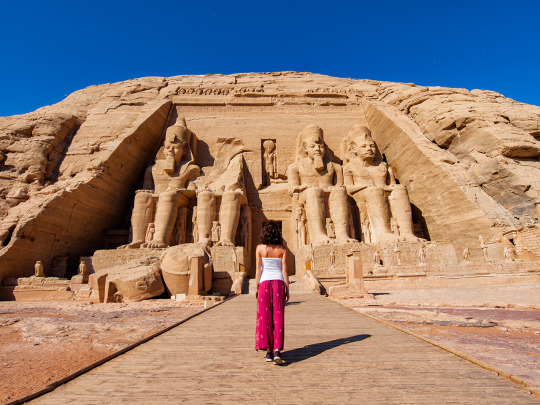
#egypt#ancient egypt#travel#day trip#tourism#tourist#pyramids of giza#giza#great pyramid of giza#giza plateau#cairo#things to do#tourist attraction#tips#history#ancient history#egypttravel#egyptian history
2 notes
·
View notes
Text

3 notes
·
View notes
Text

The Great Sphinx
Who Built the Sphinx? The Sphinx Temple Has the Answer by Mark Lehner
Many alternative thinkers claim the Sphinx is much, much older, that it existed thousands of years before Khufu. But our study of the Sphinx and the temple lying just below it—the Sphinx Temple—says no. As certain as we can be about such matters, Khafre created most of the Sphinx. However, Khufu might have started it.
The stone-by-stone map of the Sphinx Temple allowed us to investigate a telltale clue about who built the Sphinx. Quarrymen cut the core blocks (the ones forming the core of the temple walls) so thick—some weigh up to a hundred tons—that many of them include three geological layers. And it was clear that the layers in many blocks were the same as those that run through the bedrock of the Sphinx itself. The blocks had to have come from the U-shaped ditch around the Sphinx. When workers quarried the ditch they left a large block of limestone from which the Sphinx was carved.
As I moved about the Sphinx Temple during my first year of the mapping project, I was struck by how the geological layers run continuously in many places, from one block to another, as the layers must have run in the bedrock. The gangs of young men who moved these mighty stones did not have much chance of mixing them up from quarry to temple wall. The Sphinx and its temple must have been part of the same quarry-construction sequence. But could I prove this?
The following year I met Tom, who had the expertise needed to geologically “fingerprint” the blocks and trace them back to the quarry. Tom looked at the Giza Plateau less as an archaeological site and more as frozen sea floors, petrified, pancaked, and stacked into the bedrock layers from which the pyramid builders quarried blocks, created tombs, and carved the Sphinx.
These layers formed during the Eocene epoch—some 34 to 56 million years ago, as a great primordial sea retreated northward. Under its ebbing waters, a colossal bank of nummulites, unicellular plankton-like organisms, built up. A sandbar developed on the embankment, and in the more protected waters behind it, a shoal and coral reef grew. As the sea retreated to the north, the area behind the sand bank became a muddy lagoon, inhabited by burrowing bivalves and sea urchins. A regular sequence accumulated, which petrified as soft, yellow, marly layers interspersed with harder beds.
In carving the Sphinx directly from the natural rock, the ancient Egyptian quarrymen cut a cross-section through the principal geological layers of the southeastern slope of the Moqattam Formation. The hard layers of the shoal and reef, for example, make up the lowest layer in the Sphinx and its ditch.
Tom and I began our Sphinx Temple core block study by examining each layer, or bed, of the Sphinx. We gave each bed a number and marked them on photographs and on profiles of the Sphinx. The beds were easy to distinguish as they weathered differentially: harder beds protruded, softer beds receded. Also, the relative abundance of different fossils varied. Members I and II showed the greatest differences: I is a very hard gray reef formation, while the first bed of Member II, 2b, is one of the softest of the yellow marl-clay layers. Members II and III are distinct, but the boundary is not so clear as between I and II. Aigner, following an earlier geologist, set the boundary between Beds 7 and 8.
The massive fine-grained bedrock of Beds 8–9 made for good sculpting, with far more endurance than the soft-hard-soft sequence of Member II. This is why the 4th Dynasty builders reserved Member III for the more exposed head. Details like the eyebrows have survived wind, rain, and sand for 4,500 years.
But from which beds exactly did they cut the core blocks? Would this tell us where they were in fashioning the Sphinx at the time they built the Sphinx Temple? To answer these questions we logged each block. We recorded their lithic qualities and fossil content, and assigned each block to one of seven types, A through G.
Most of the Sphinx Temple core blocks are Type A and consist of three layers: upper and lower hard massive layers separated by the soft, yellow marl layer in the middle, which runs continuously through separate blocks over long stretches of temple wall. These blocks come from beds that correspond to the lower chest of the Sphinx.
Type C blocks come from beds that correspond to the Sphinx’s upper chest, top of the chest, and base of the neck. In the Sphinx Temple these blocks cluster near the front. The quarry workers hewed the blocks from layers that would become the lion’s upper chest and top of the back and then dragged them to the eastern front of the Sphinx Temple. As quarry workers cut deeper, to the middle and lower Sphinx chest level, haulers and builders composed most of the core walls of the temple.
Block types B and D did not come from the Sphinx ditch. They most closely match strata to the southwest, exposed in the quarry cut for the Khentkawes Monument. They are less frequent and more intermittent in the temple walls than the A and C blocks. This could indicate that the builders stockpiled these blocks and brought them into the walls whenever there was a hiatus in the quarrying, dragging, and placing of the A blocks from the Sphinx ditch.
Khafre’s workers started shaping the Sphinx as they built his valley temple. And they were probably still shaping the lower lion body, cutting it out of its surrounding ditch, as they made the Sphinx Temple, Khafre’s last major addition to his pyramid complex. But they did not finish. They left the Sphinx Temple incomplete, without its exterior granite casing.
#ancient egypt#kemet#kemetic#egypt#pharaonic#Great Sphinx of Giza#seven wonders of the ancient world#Khufu#Khafre
109 notes
·
View notes
Text

Tomb Chapel of Queen Meresankh III
Meresankh III was one of the most famous Queens in the Old Kingdom of Ancient Egypt. Her grandfather was King Khufu, an important ruler in the 4th Dynasty, who is well known as the builder of the largest pyramid on the Giza plateau.
On April 23, 1927 the tomb was discovered and excavated by George Reisner. with subsequent excavations undertaken by his team on behalf of Harvard University and the Museum of Fine Arts, Boston.
They found extraordinarily preserved statuary and colorful relief sculpture with a remarkable emphasis on the female figures. Meresankh’s husband, King Khafre, was not shown in the tomb at all. This indicates the importance of female nobility during the queen`s life.
Photo: Sandro Vannini
Read more
67 notes
·
View notes
Note
Hey there! I recently saw you respond to an ask about stone cutting techniques (you provided a FANTASTIC video example of using a sledge hammer and large nails to split stones in stunning straight lines). My parents have fallen down the revisionist history black hole (Freddy Silvia’s brand of crazy if you’ve ever heard of him) and the stone cutting for the pyramids was one of the BS things they didn’t believe could be done with simple machines. But the video you provided is so straightforward and such a widely used technique even they can’t really argue against that one. 🤩 I was wondering if you had any additional resources on the following topics, as I’d love to have resources to whip out if necessary:
- How the quarried stones for the pyramids were transported to the pyramids
- How the stones were moved into place on the pyramids
- The disproving of the “10000 year old sphinx” theory
Thank you for your expertise!
God, sorry to hear about your parents, I hope you can dig them out of that hole. Best, most accessible book I can recommend is The Complete Pyramids of Ancient Egypt by Mark Lehner, and pretty much anything else on the topic by the same. The website of the Giza Plateau Mapping Project, which is also led by Mark, has a ton of info as well. G'luck!
84 notes
·
View notes
Text
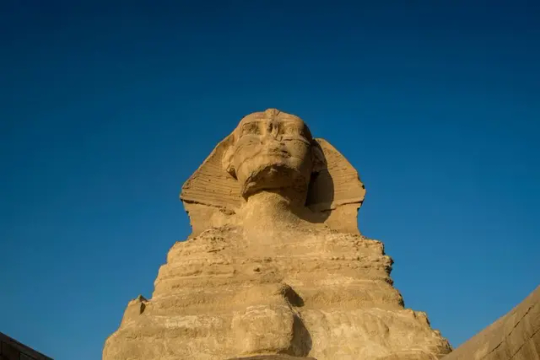
The Hunt: What Happened to the Great Sphinx’s Nose?
The mystery of the Egyptian statue's missing nose has fascinated people for centuries.
Much like the desert winds that perhaps helped shape it, conspiracy theories swirl around the Great Sphinx guarding the Giza plateau—especially regarding how the winged lion’s human head lost its nose. One enduring hypothesis blames Napoleon Bonaparte’s troops for blowing the snout off during target practice. While that conspiracy’s long-debunked, it persists in popular culture. Director Ridley Scott knowingly depicted the myth in last year’s Napoleon biopic, without sacrificing any of his film’s critical acclaim. However, Egypt’s Dr. Zahi Hawass told Britannica, “We have, really, to say to everyone that Napoleon Bonaparte has nothing to do with destroying the Sphinx’s nose.”
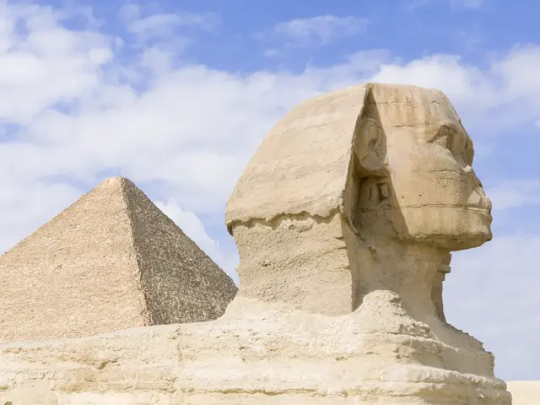
Napoleon’s 1798 battle didn’t even take place on the Giza plateau, but 10 miles north at Imbabah. Some theories have posited that storms and earthquakes shook the Sphinx’s nose from its face. Others squabble over which regional conflict (if not Napoleon’s Battle of the Pyramids) led to the nose’s destruction. In 1990, J.P. Lepre noted that “the figure was used as a target for the guns of the Mamluks,” who were actually Napoleon’s opponents.
The French emperor did, however, lay eyes on the Sphinx’s face when he arrived in Giza, with many soldiers, painters, and engravers in tow. “Thousands of years of history are looking down upon us,” he reportedly exclaimed beneath the monument’s gaze. Napoleon didn’t respect borders, but he did respect history. The Waterloo Association called the lingering accusations against him “particularly unjust because the French general brought with him a large group of ‘savants’ to conduct the first scientific study of Egypt and its antiquities.” The resulting Orientalist survey ignited an Egyptian fervor back in Europe.
Primary materials prove the nose removal predated Napoleon, too. Danish naval captain Frederic Louis Norden’s sketch from 1738 depicts the Sphinx without its central facial feature. What’s more, French naturalist Dr. Pierre Belon visited the Sphinx in 1546, writing that it had sustained damage and “no longer [had] the stamp of grace and beauty so admired by Abdel Latif in 1200”.
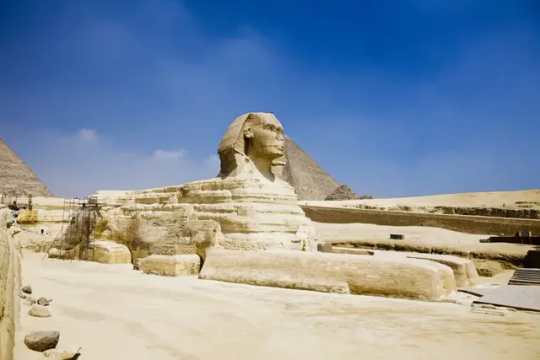
Medieval Arab scholars such as al-Maqrīzī pin the damage on Muhammed Sa’im al-Dahr, a 12th-century Sufi Muslim from a respected Cairo convent, who was allegedly angry that peasants used the Sphinx to entreat Abul Hol (the Arabic name for the sphinx) into helping their harvests. Removing an idol’s nose was an accepted method to suffocate spirits inside. Still, the details remain up for debate. Hawass believes that al-Dahr acted alone. Others claim he hired men to desecrate the Sphinx. Most experts, however, agree the great statue’s nose came off with a chisel. It is also generally accepted that al-Darhr’s actions got him killed by angry villagers. Sadly, the nose itself has likely crumbled into the desert.
By Vittoria Benzine.
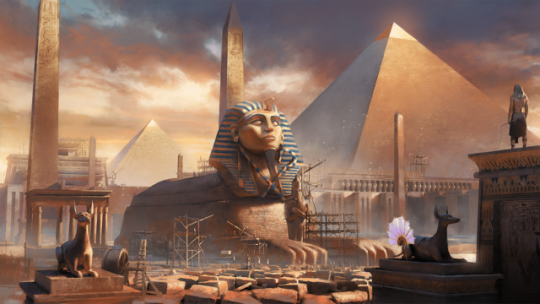
#the sphinx#The Hunt: What Happened to the Great Sphinx’s Nose?#Giza Plateau#sculpture#statue#pharaoh Khafre#ancient artifacts#archeology#archeolgst#history#history news#ancient history#ancient culture#ancient civilizations#ancient egypt#egyptian history#egyptian gods#egyptian pharaoh#egyptian mythology#egyptian art#ancient art
16 notes
·
View notes
Text
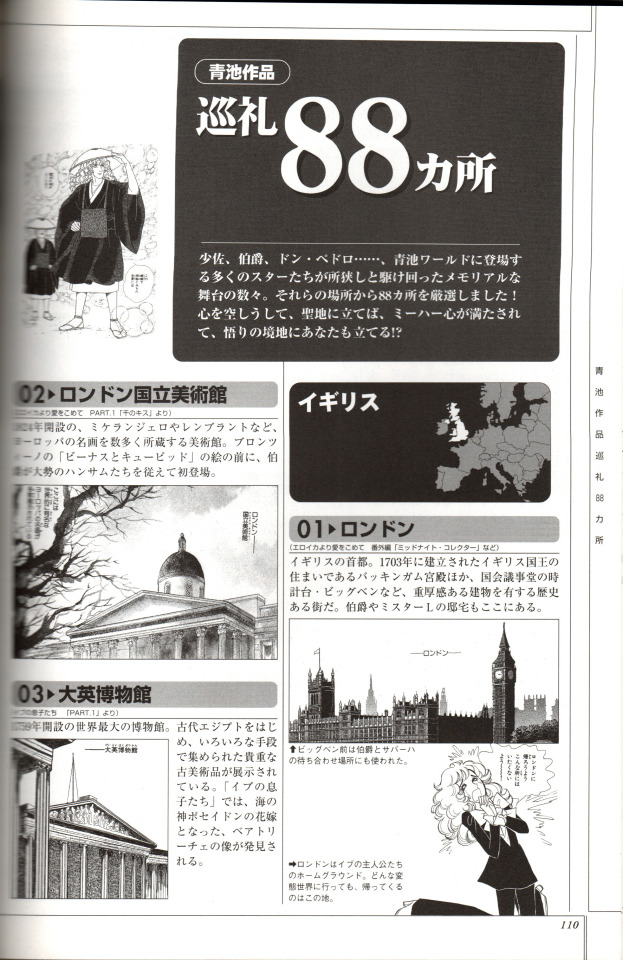


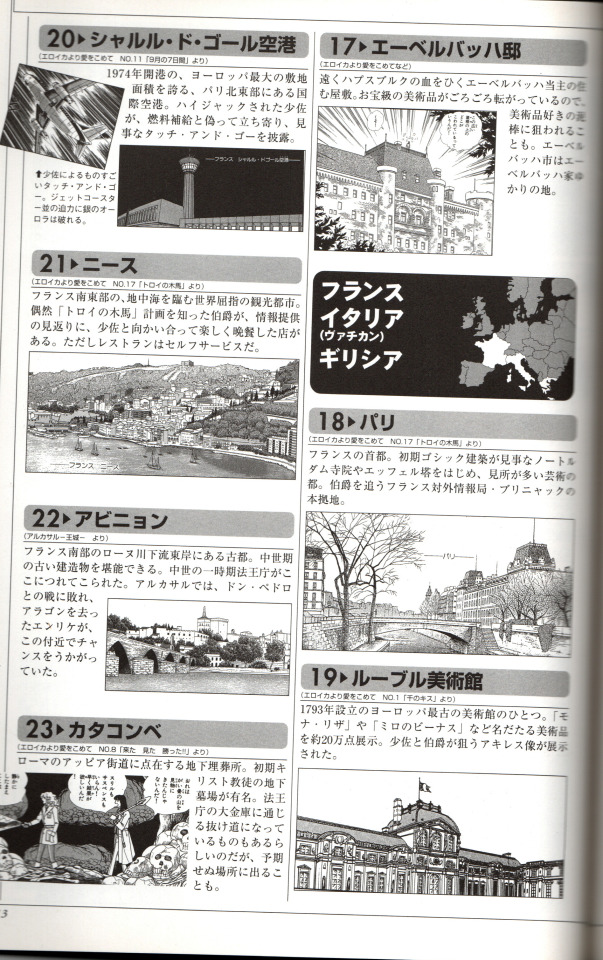
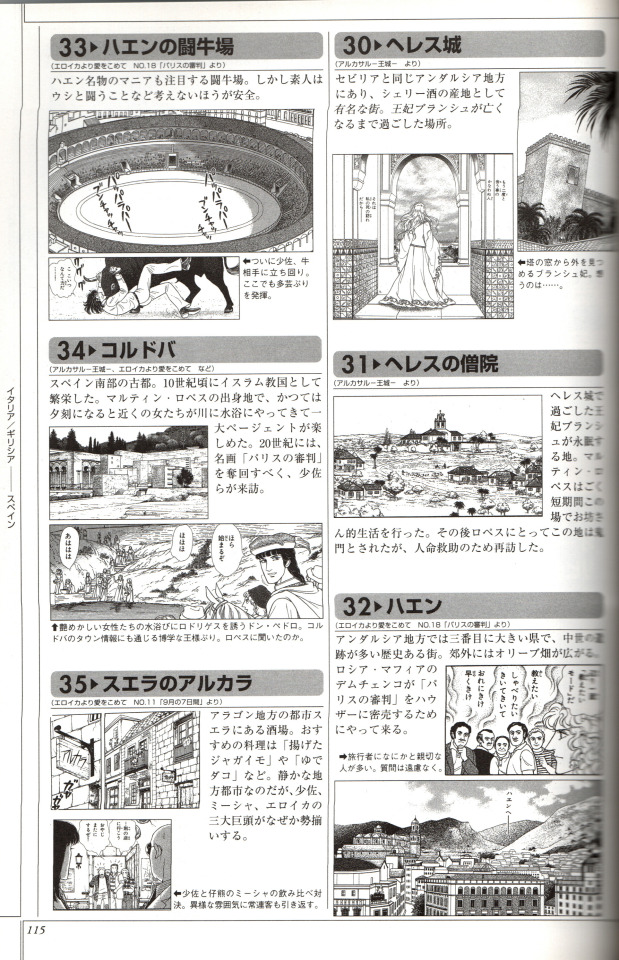
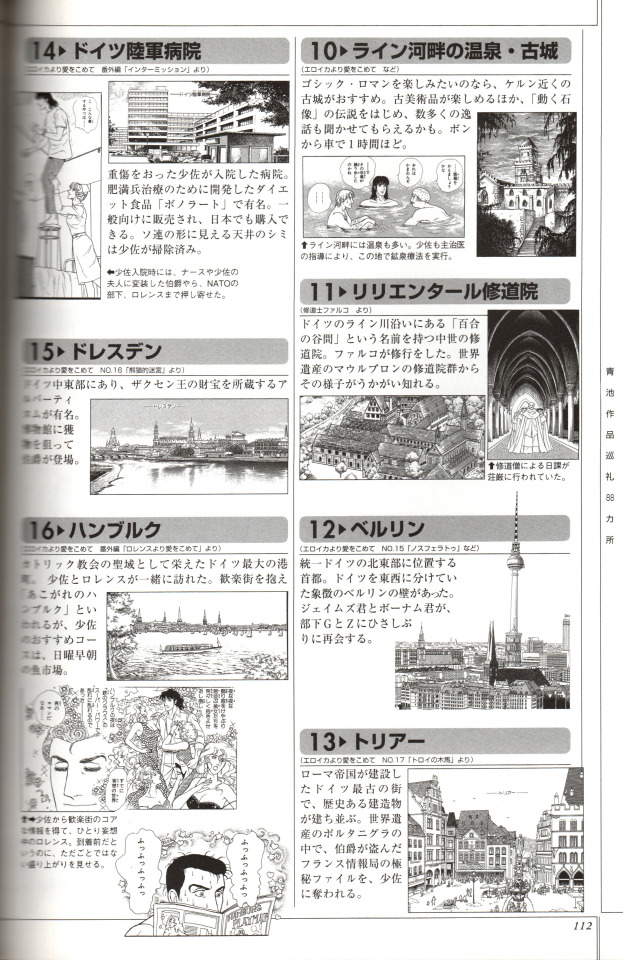
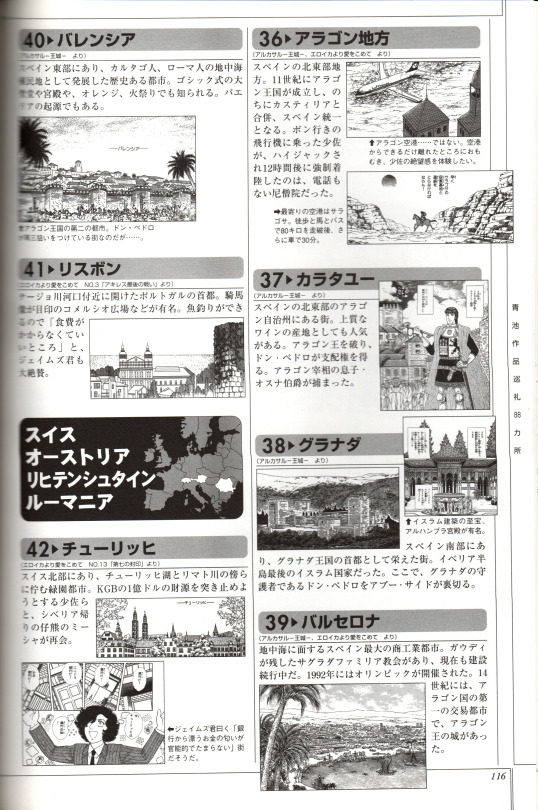


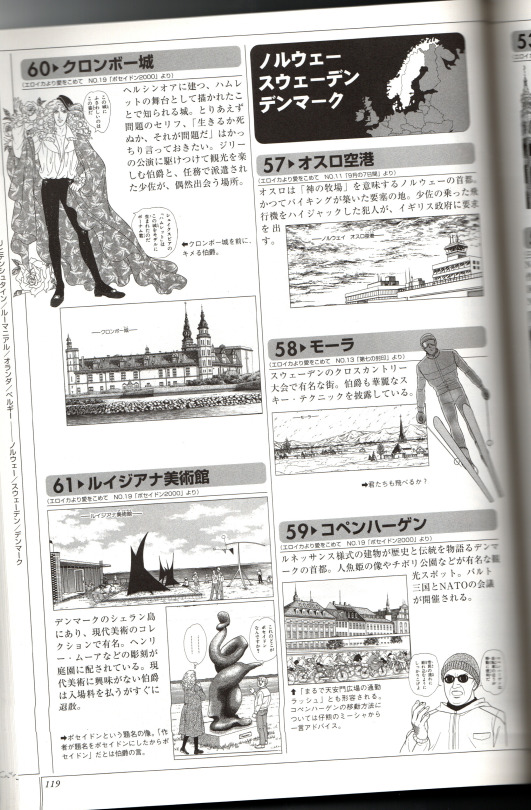
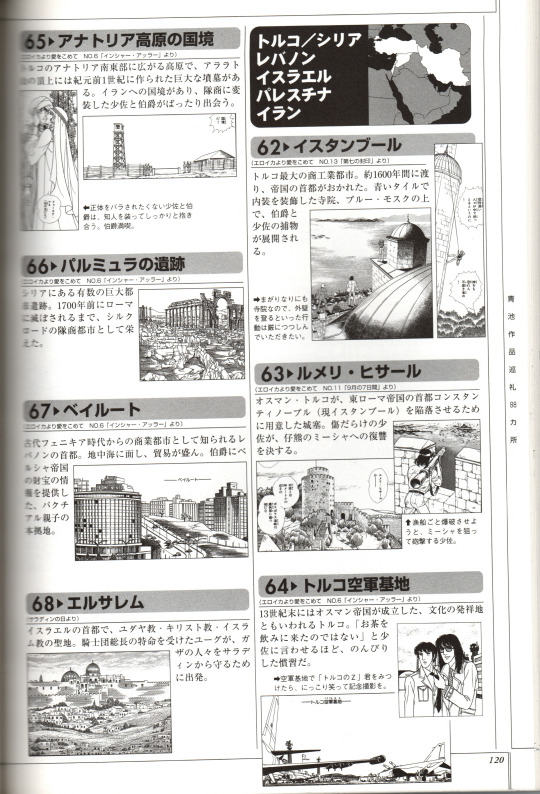
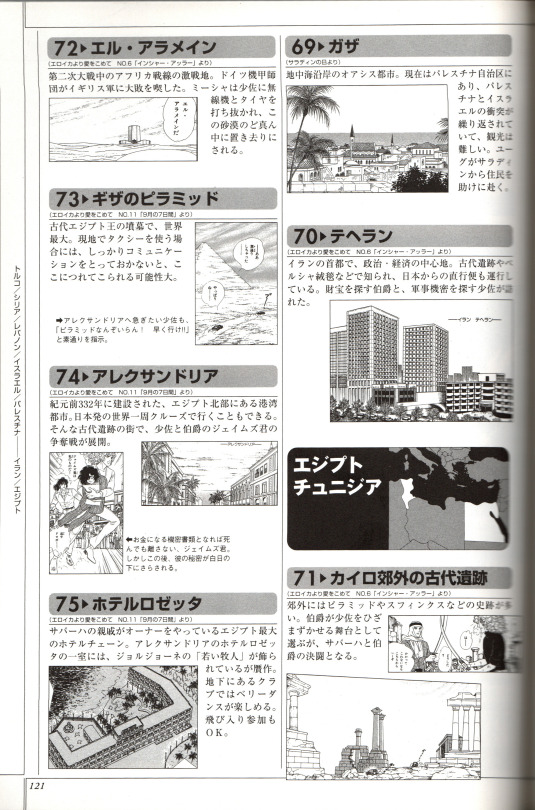


aoike character guide book
places visited in yasuko aoike's works (translation under the cut by the lovely @asnowperson)
ENGLAND 1- London (Midnight Collector side story among others) 2- The National Gallery (London) (Pt.1 A Thousand Kisses) 3- British Museum (London) (Pt.1) 4- Salibury Military Base (Lieutenant Colonel Eberbach side story) 5- Heathrow Airport (No.11 Seven Days in September among others)
GERMANY 6- Plymouth (El halcón) 7- Bonn 8- NATO Bonn Office 9- Cologne 10- Thermal Spas on the Rhine River and the old castles (Eroica, among others) 11- Lilienthal Monastery (Shuudoushi Falco) 12- Berlin (No. 15 Nosferatu, among otheres) 13- Trier (No.17 Trojan Horse) 14- German Military Hospital (Intermission side story) 15- Dresden (No.16 The Panda’s Maze) 16-Hamburg (From Lawrence with Love side story) 17- Eberbach Mansion
FRANCE/ITALY/GREECE 18- Paris (No.17 Trojan Horse) 19- Louvre Museum (No.1 A Thousand Kisses) 20- Charles de Gaulle Airport (No.11 Seven Days in September) 21- Nice (No.17 Trojan Horse) 22- Avignon (Alcazar Oujo) 23- Catacombes (No.8 Veni Vidi Vici) 24- St.Peter’s Basilica (No.8 Veni Vidi Vici) 25- St.Peter’s Square (No.8 Veni Vidi Vici) 26- Parthenon Temple (No.4 Love in Greece)
SPAIN/PORTUGAL 27- Sevilla (Alcazar Oujo) 28- Sigüenza (Alcazar Oujo) 29- Toledo (Alcazar Oujo) 30- Jerez Castle (Alcazar Oujo) 31- Jerez Monastery (Alcazar Oujo) 32- Jaén (No.18 Judgment of Paris) 33- Plaza de Toros de Jaén (No.18 Judgment of Paris) 34- Córdoba (Eroica) 35- Zuera, Alcala (No.11 Seven Days in September) 36- Aragon region (Eroica) 37- Calatayud (Alcazar Oujo) 38- Granada (Alcazar Oujo) 39- Barcelona (Eroica) 40- Valencia (Alcazar Oujo) 41- Lisbon (No.3 Achilles’ Last Stand)
SWITZERLAND/AUSTRIA/LICHTENSTEIN/ROMANIA 42- Zürich (No.13 The Seventh Seal) 43- Luzern (No.12 The Laughing Cardinals) 44- Vienna State Opera (No.14 Emperor Waltz) 45- Vienna Central Cemetery (No.14 Emperor Waltz) 46- Innsbruck (No.14 Emperor Waltz) 47- Innsbruck Airport (No.14 Emperor Waltz) 48- Hofburg Palace (No.14 Emperor Waltz) 49- Tyrol region (No.14 Emperor Waltz) 50- Lichtenstein (No.13 The Seventh Seal) 51- Romania military base (No. 15 Nosferatu)
THE NETHERLANDS/BELGIUM 52- Amsterdam (Eroica, Madan no Shashu) 53- Bruxelles (No.17 Trojan Horse) 54- NATO HQ (No.19 Poseidon 2000) 55- European Commission HQ (No.13 The Seventh Seal) 56- Antwerp (No.17 Trojan Horse)
NORWAY/SWEDEN/DENMARK 57- Oslo Airport (No.11 Seven Days in September) 58- Mora (No.13 The Seventh Seal) 59- Copenhagen (No.19 Poseidon 2000) 60- Kronborg Castle (No.19 Poseidon 2000) 61- Lousiana Museum of Modern Art (No.19 Poseidon 2000)
TURKEY/SYRIA/LEBANON/ISRAEL/PALESTINE/IRAN 62- İstanbul (No.13 The Seventh Seal) 63- Rumeli Hisarı (No.11 Seven Days in September) 64- Turkish air base (No.6 Inshallah) 65- National borders of Anatolian plateau (No.6 Inshallah) 66- Historical remains of Palmyra (No.6 Inshallah) 67- Beirut (No.6 Inshallah) 68- Jerusalam (Saladin no Hi) 69- Gaza (Saladin no Hi) 70- Tehran (No.6 Inshallah)
EGYPT/TUNISIA 71- Ancient remains outside Cairo (No.6 Inshallah) 72- El Alameyn (No.6 Inshallah) 73- Giza Pyramids (No.11 Seven Days in September) 74- Alexandria (No.11 Seven Days in September) 75- Hotel Rosetta (No.11 Seven Days in September) 76- Carthage (No.17 Trojan Horse)
RUSSIA/JAPAN/USA/OTHERS 77- Moscow (No.19 Poseidon 2000) 78- St. Petersburg (No.18 Judgment of Paris) 79- Hermitage Museum (No.18 Judgment of Paris) 80- Siberia (A Tale of Alaska side story) 81- Uspensky Air Base (Eroica) 82- Tokyo Tower (Hiiro no Yuuwaku) 83- Alaska (A Tale of Alaska side story) 84- FBI Fairbanks Office (No.9 The Alaskan Front) 85- Tazlina Lake (No.9 The Alaskan Front) 86- Hawaii (No.9 The Alaskan Front) 87- West of Eden (Eve no Musukotachi) 88- Olympos (Eve no Musukotachi)
#this ones actually in order since everything is numbered#charabook#from eroica with love#sons of eve#el halcon#alcazar#etc etc#yasuko aoike#my scans#mine
24 notes
·
View notes
Text





Menkaure Pyramid, Giza Plateau
1 note
·
View note
Text
It’s not often that a scientific article is born from a cup of tea, but the following is just such a tale. It began on a cold winter’s morn in Michigan as a foot and a half (46cm) of snow lay on the ground with temperatures hovering around 0 degrees Fahrenheit (-18C). To warm up for a morning of research and writing, I (Millek) brewed a cup of peppermint tea, and feeling perhaps a bit melancholy due to the weather, I decided to read the little info fact on the tea box which said, “Peppermint has been used medicinally for thousands of years—in fact, dried peppermint leaves dating back to 1000 BC have been found in the pyramids of Egypt.”
To many, this wouldn’t have struck a nerve, but being an ancient Near Eastern archaeologist, it certainly struck one for me. “The pyramids of Egypt” (typically referring to the pyramids of Khufu, Khafre, and Menkaure on the Giza plateau) are from the Old Kingdomdating to roughly 2500 BCE. The only things found in them were bats, sand, and rubble having been emptied in antiquity.
2 notes
·
View notes
Text


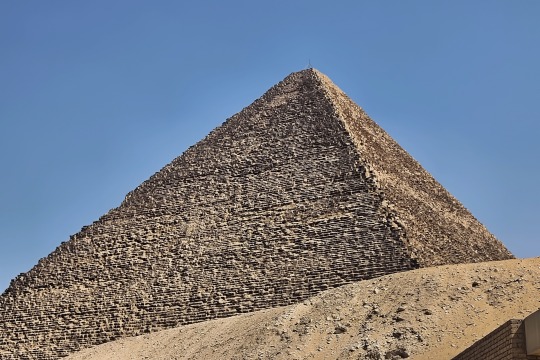
Giza Pyramid Complex - EGYPT
12 notes
·
View notes
Text






Those last three photos don’t look that interesting but wait, there’s a story. (Insert groans from students in my history class here.)
All around the pyramids on the Giza plateau are these marks on the limestone bedrock: divots, channels, and areas that look like maybe they were used to support beams or drain water.
Water, of course, is a natural level. And the pyramid construction site would need to be leveled for construction; eyeballing it doesn’t quite work.
In other words, it’s quite possible that the answer to the question that is supposedly BAFFLING ARCHAEOLOGISTS (how the pyramids were built) has been there all along. But they’ve never been mapped.
The cynic in me explains this because there’s no way it’ll yield treasure so no one wants to fund that research. Just knowledge for its own sake, and why get that when Ancient Aliens sells so much ad time?
#photography#travel#photographers on tumblr#egypt#historic#pyramids#pyramids of giza#archaeology#cairo#world heritage#egyptology#ancient aliens is racist af
15 notes
·
View notes
Text
Pyramids of Giza - OMG!!
September 20, 2024.
Just a few minutes out of Cairo is the Giza plateau. I’m just posting pictures here - because that is all you need. We learned a ton of stuff about these amazing structures and their builders - but that is for another time.









A boat able to transport these huge blocks and other building supplies was found in this part of the canal above. You can see the Great Pryamid on the left.
If you turned away from the Gaza plateau you would see this. CAIRO!

The new museum is right here - FYI!

And THAT is where we spent the day today. Heading to Luxor tomorrow.
Stay tuned.
2 notes
·
View notes